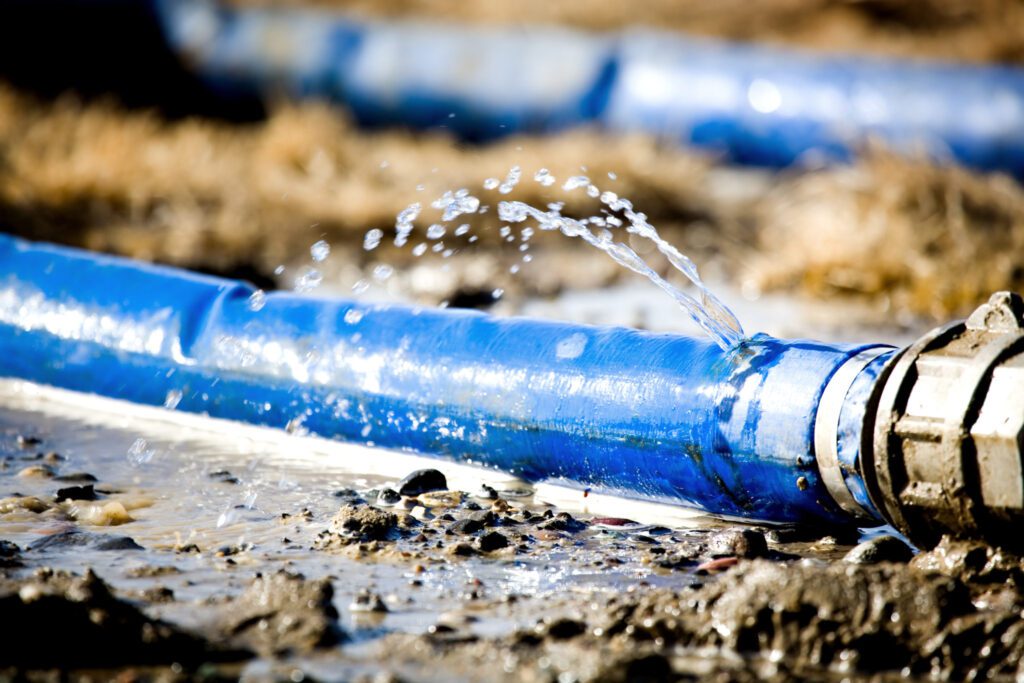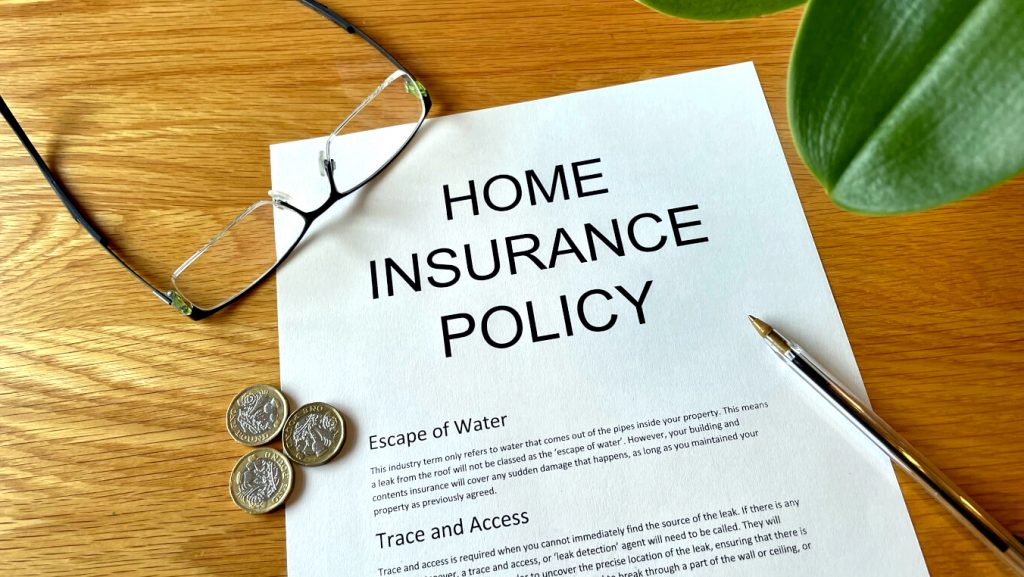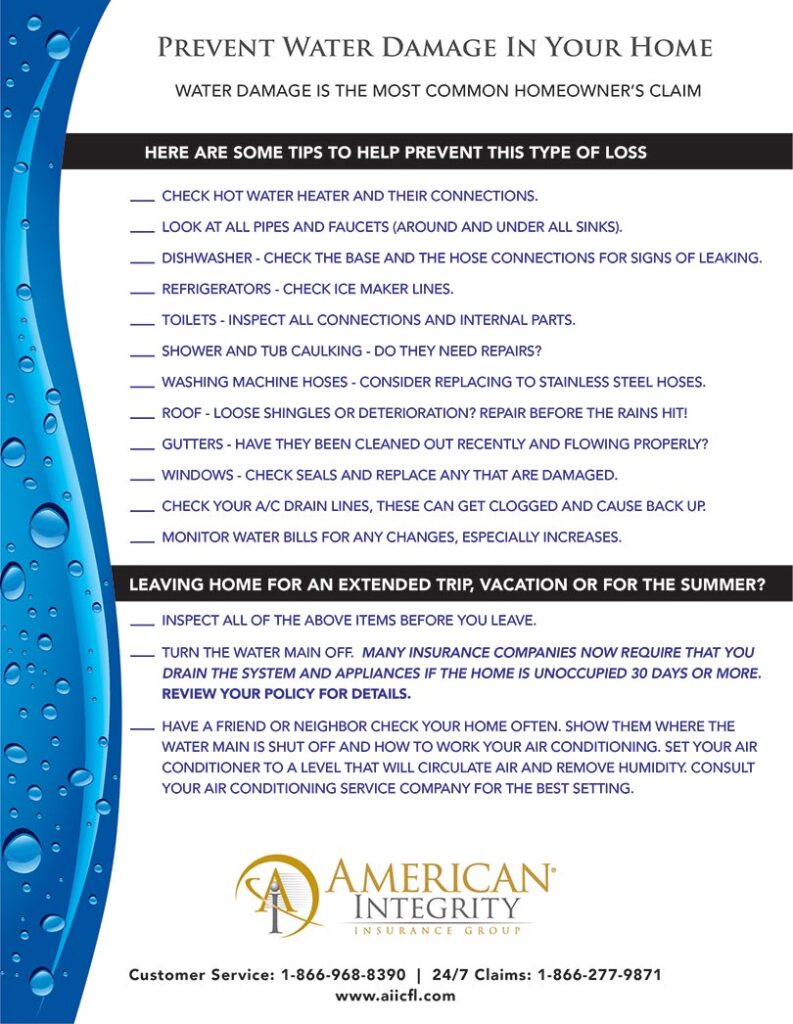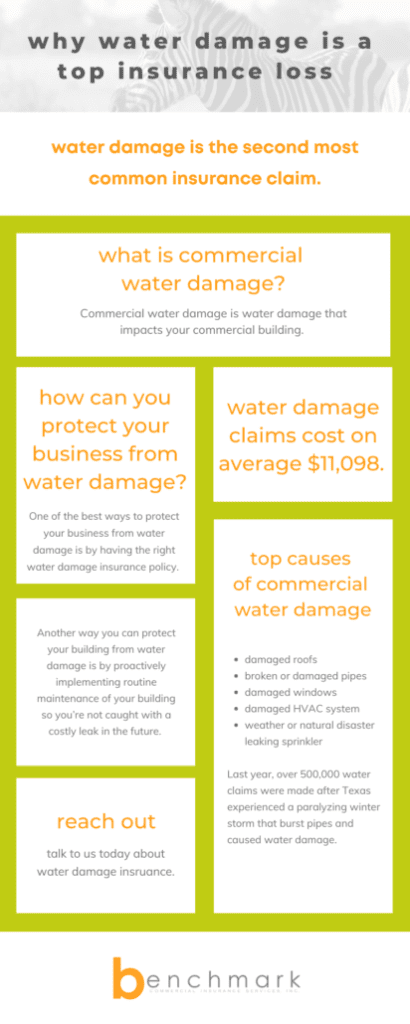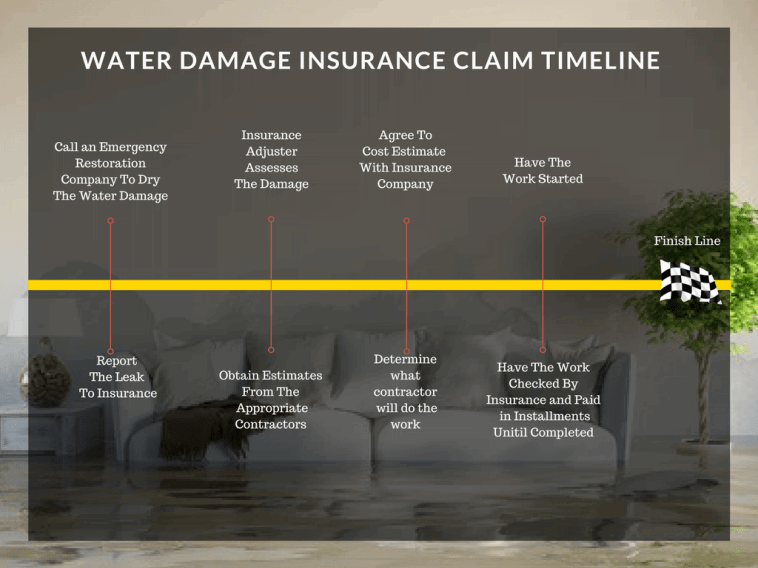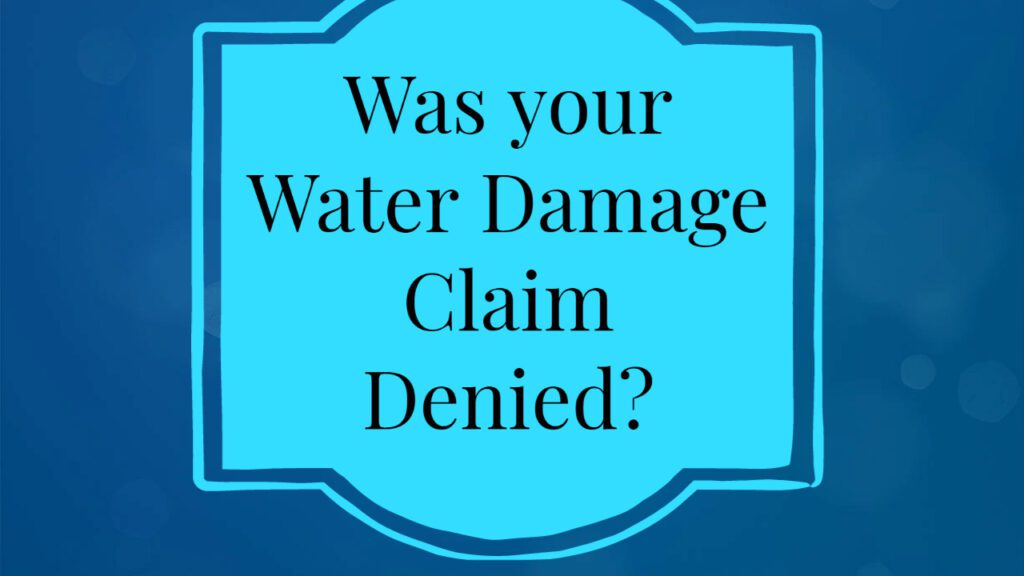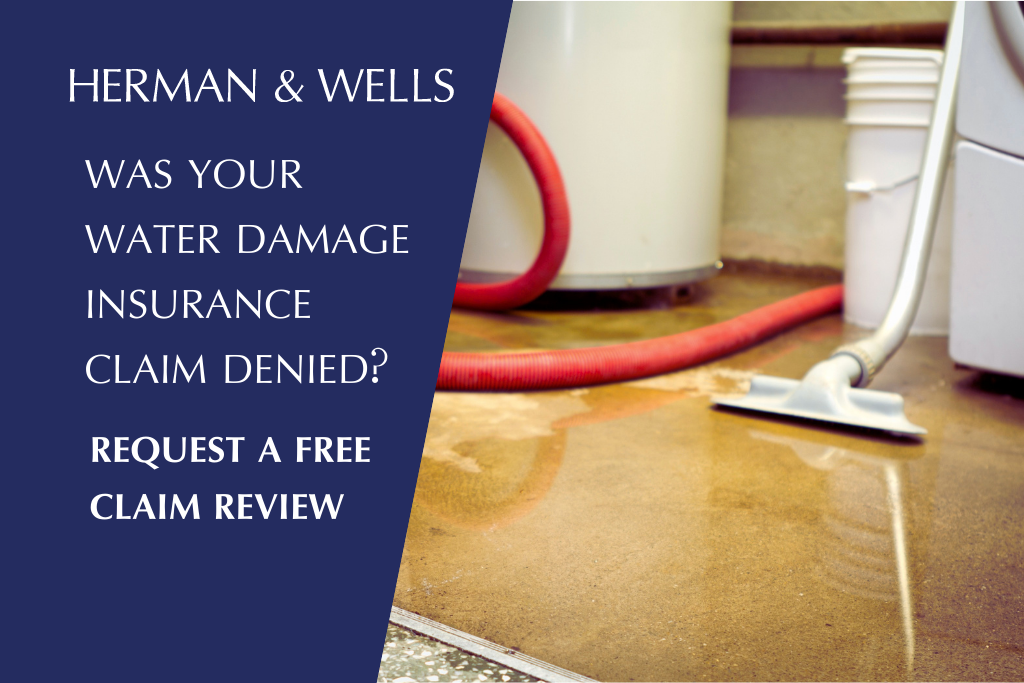If you have a serious plumbing mishap that floods your home, panic may set in as you try to figure out how to handle the situation. But fear not, as there are steps you can take to mitigate the damage and get your home back in order. From turning off the main water supply to calling a professional plumber, this article will guide you through the necessary actions to take when faced with a plumbing emergency.
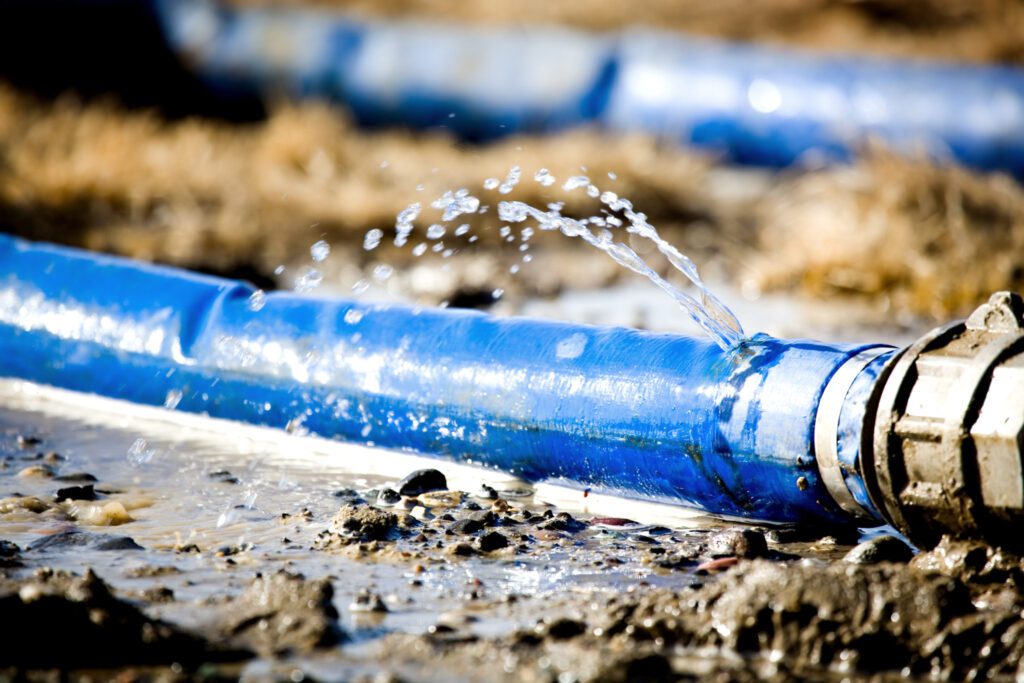

Immediate Steps to Take
Turn off the water supply
When faced with a plumbing mishap that causes flooding, the first and most crucial step is to immediately turn off the water supply. This will help prevent further damage and minimize the flow of water into your home. Locate the main shut-off valve, which is typically situated near the water meter or where the main water line enters your property. Turning off this valve will stop water from flowing into your home and give you the opportunity to assess the situation.
Shut off the electricity
In the event of a plumbing mishap that involves flooding, it is essential to prioritize your safety by shutting off the electricity. Water and electricity are a dangerous combination that can lead to electrocution or fires. Locate your electrical panel or circuit breaker box and switch off the power to the affected areas. If you are unsure how to do this, it’s best to contact a professional electrician to ensure that the electricity is safely disconnected.
Open windows and doors
Once you have turned off the water supply and electricity, the next immediate step is to open windows and doors to promote ventilation. This will help in drying out the affected areas and prevent the growth of mold and mildew. It is crucial to allow fresh air to circulate throughout your home to aid in the drying process and to eliminate any lingering moisture.
Move furniture and valuables
To prevent further damage to your furniture and valuables, it is important to move them to a safe and dry location. Take the time to assess the extent of the water damage and identify items that can be salvaged. By removing these items from the affected area, you can minimize the risk of additional harm and facilitate the restoration process.
Protect electrical appliances
In the event of a plumbing mishap that leads to flooding, it is vital to prioritize the safety of your electrical appliances. If any appliances are in contact with water or in close proximity to the flooded area, it is crucial to unplug them immediately. Water damage can cause severe electrical hazards, so it is vital to disconnect and protect your appliances to avoid any potential damage or accidents.
Contacting a Professional Plumber
Research reputable plumbing companies
When facing a plumbing mishap, it is important to seek the assistance of a professional plumber who can provide the necessary expertise and guidance. Take the time to research reputable plumbing companies in your area. Look for customer reviews, ratings, and testimonials to ensure that you choose a reliable and experienced plumber.
Check for emergency services
In the case of a plumbing emergency, it is crucial to select a plumbing company that offers emergency services. Not all plumbers may be available 24/7, so it is essential to check their availability and responsiveness during urgent situations. Having a reliable plumber who can promptly respond to your call can make a significant difference in mitigating the damage caused by a plumbing mishap.
Get multiple quotes
To ensure that you receive a fair and reasonable estimate, it is advisable to obtain multiple quotes from different plumbing companies. By doing so, you can compare the costs, services, and timelines offered by each plumber. Remember that the cheapest option may not always be the best, so consider the reputation, expertise, and experience of each plumber before making your decision.
Ask for references
A reputable plumber will be more than willing to provide references from previous clients. Reach out to these references and inquire about their experiences with the plumber. Asking about the quality of work, professionalism, and reliability can help you gauge the plumber’s competence and determine if they are the right fit for your plumbing needs.
Verify insurance and licensure
Before hiring a plumber, it is crucial to verify their insurance and licensure. Plumbing work involves potential risks, and hiring an insured and licensed professional ensures that you are protected from any liability in the event of accidents or damage. Ask the plumber to provide proof of insurance and licensing, and do not hesitate to verify this information with the relevant authorities if needed.
Dealing with Water Damage
Document the damage with photos and videos
To support your insurance claims and communicate the extent of the damage effectively, it is essential to document the water damage with photos and videos. Take clear and detailed pictures of the affected areas, including walls, floors, furniture, and any valuable items that have been damaged. These visual records will serve as crucial evidence to support your claims and ensure that you receive the appropriate compensation for the restoration process.
Contact your insurance company
Notify your insurance company about the plumbing mishap and provide them with all the necessary details. Insurance policies often cover water damage caused by plumbing mishaps, and it is important to initiate the claims process as soon as possible. Be prepared to provide the documentation you have gathered, including photos, videos, and any relevant receipts. Keep a record of all communication with your insurance company, including names, dates, and details of each conversation.
Assess the extent of damage
Once the immediate steps have been taken and you have documented the damage, it is important to assess the extent of the water damage thoroughly. This will help you understand the scope of the restoration required and enable you to communicate effectively with professionals who will be assisting you throughout the process. Look for signs of water seepage, dampness, discoloration, and structural damage caused by the flooding.
Remove standing water
Standing water can cause further damage to your property and create an environment conducive to mold and mildew growth. Depending on the severity of the flooding, you may need to use a wet/dry vacuum or hire professional water extraction services to remove standing water from your home. Do not attempt to remove excess water using electrical appliances or by using towels or buckets.
Start the drying process
After removing standing water, it is crucial to start the drying process as soon as possible. Open windows and doors to facilitate air circulation and use fans to promote faster drying. Dehumidifiers can also be helpful in removing excess moisture from the air. Additionally, consider using specialized drying equipment such as air movers or industrial-grade fans to effectively dry out the affected areas. It is important to ensure thorough drying to prevent mold and mildew growth, as well as structural damage.
Repairing and Restoring Plumbing System
Identify and fix the source of the problem
To prevent future plumbing mishaps and ensure a successful restoration, it is vital to identify and fix the source of the problem. The initial plumbing mishap may have been caused by a burst pipe, clogged drain, or other underlying issues. By addressing the root cause, you can avoid future incidents and create a more reliable plumbing system. Consult with a professional plumber to accurately diagnose and fix the plumbing issue that caused the initial mishap.
Repair or replace damaged pipes
If the flooding has led to noticeable damage to your plumbing system, it may be necessary to repair or replace damaged pipes. Inspect the plumbing system thoroughly to identify any leaks, cracks, or compromised pipes. Depending on the severity of the damage, a plumber may need to patch or replace sections of the plumbing system to restore it to its optimal functioning state.
Test the system for leaks
After repairing or replacing damaged pipes, it is crucial to test the entire plumbing system for any remaining leaks. This step helps ensure that the restoration process has been successful and that your plumbing system is functioning properly. A professional plumber can perform pressure tests and visually inspect all pipes, joints, and fixtures to identify and address any remaining leaks.
Inspect and clean drains
Flooding can lead to debris buildup and blockages within drains, causing further plumbing issues. It is essential to have your drains inspected and cleaned as part of the restoration process. A professional plumber can use specialized tools and techniques to remove any obstructions and ensure that your drains are free-flowing.
Consider preventive measures
To minimize the risk of future plumbing mishaps, it is advisable to consider implementing preventive measures. For example, installing water leak detectors, maintaining regular inspections, and investing in pipe insulation can help prevent issues such as burst pipes and leaks. Discuss preventive measures with your plumber to identify the best options for your specific plumbing system.
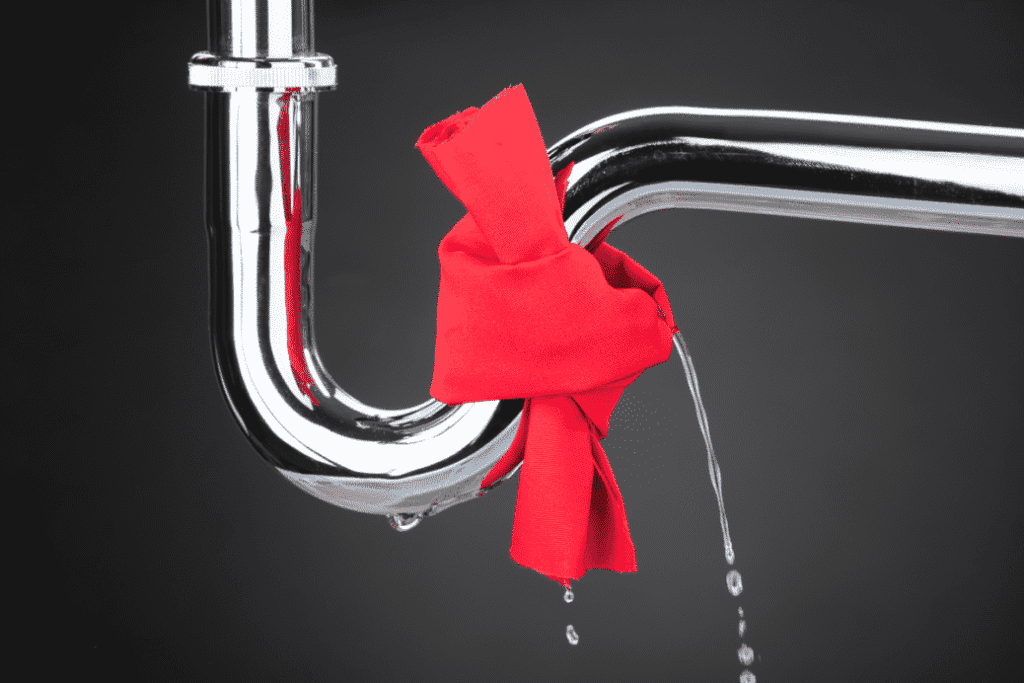

Addressing Mold and Mildew
Inspect for signs of mold and mildew
Water damage resulting from a plumbing mishap can create an ideal environment for mold and mildew growth. Inspect your home thoroughly for visible signs of mold and mildew, such as discoloration, musty odors, or visible patches. Pay particular attention to areas that were affected by the flooding. If you detect any signs of mold or mildew, it is important to address the issue promptly to prevent further damage and potential health risks.
Schedule professional mold testing
If you suspect mold or mildew growth but are unable to detect visible signs, it is advisable to schedule professional mold testing. Certified mold inspectors can assess your home for hidden mold growth using specialized equipment and techniques. Their expertise can help identify any potential health risks and provide guidance on the appropriate remediation steps needed to address the issue.
Follow proper mold remediation procedures
If mold or mildew growth is confirmed, it is crucial to follow proper mold remediation procedures to ensure effective removal and prevent further contamination. Mold remediation typically involves isolating the affected area, using appropriate personal protective equipment, removing mold-infested materials, and thorough cleaning using specialized mold-killing products. It is recommended to consult with an experienced mold remediation professional to ensure that the process is carried out safely and effectively.
Check for hidden mold in wall cavities
During the mold remediation process, it is important to check for any hidden mold in wall cavities or areas that were not immediately exposed to the flooding. Mold can grow behind walls or underneath flooring, and if left unaddressed, it can cause significant damage over time. If you suspect hidden mold, consult with a professional mold remediation specialist who can conduct thorough inspections and implement appropriate remediation measures.
Prevent future mold growth
To prevent future mold growth, it is essential to address the underlying causes of the initial plumbing mishap. Proper ventilation, maintaining optimal indoor humidity levels, and promptly addressing any water leaks or moisture issues can help minimize the risk of mold and mildew growth. Additionally, consider using mold-resistant materials and regularly inspecting your home for signs of water damage or excessive moisture.
Ensuring Health and Safety
Wear protective gear
When dealing with a plumbing mishap that involves flooding or mold growth, it is important to prioritize your health and safety. Wear appropriate protective gear, including gloves, goggles, and respiratory masks, to minimize exposure to potentially harmful substances. This gear will protect you from contaminants, allergens, and potentially harmful chemicals that may be present during the restoration and remediation processes.
Ensure proper ventilation
During the restoration and mold remediation processes, it is essential to ensure proper ventilation to remove stale air, odors, and excessive moisture. Open windows, use fans, and consider using dehumidifiers to maintain optimal indoor air quality. Adequate ventilation will help dry out the affected areas, reduce the risk of mold growth, and improve overall air circulation within your home.
Keep children and pets away
During the restoration and remediation processes, it is important to keep children and pets away from the affected areas. Not only can they pose safety risks, but they may also be more susceptible to the potential health hazards associated with water damage, mold, and exposure to chemicals used during the restoration process. Ensure their safety by keeping them out of the affected areas until the restoration is complete.
Beware of electrical hazards
When dealing with a plumbing mishap that involves flooding, it is crucial to be cautious of electrical hazards. As mentioned earlier, it is important to shut off the electricity to the affected areas to prevent any potential accidents. Additionally, avoid touching electrical appliances or outlets that have been exposed to water. If you suspect any electrical damage or risk, contact a professional electrician to assess and address the situation.
Use caution when handling contaminated materials
During the restoration and remediation processes, it is important to exercise caution when handling materials that may be contaminated. This includes damaged furniture, flooring, or building components. Wear proper protective gear, such as gloves and masks, when handling these materials, and dispose of them safely and in accordance with local regulations. Minimize your contact with potentially contaminated materials to reduce the risk of exposure to harmful substances.
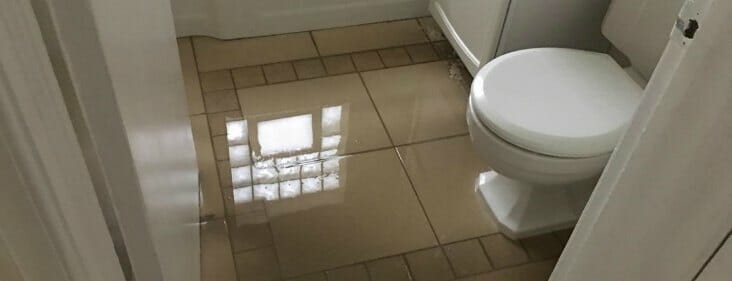

Managing Water-Damaged Belongings
Sort and discard irreparable items
After a plumbing mishap that causes flooding, it is essential to sort through your belongings and identify items that are irreparably damaged. This can include furniture, rugs, carpets, clothing, and other items that have been heavily affected by water. Discard these items properly, following local guidelines for waste disposal, to prevent potential health risks associated with contaminated materials and mold growth.
Clean and sanitize salvageable items
For items that can be salvaged, it is crucial to clean and sanitize them thoroughly to remove any contaminants or odors. Use appropriate cleaning products and techniques for each type of item. For example, clothing may require special laundering instructions, while hard surfaces may need disinfectants or mold-resistant treatments. Follow manufacturer guidelines and consult with professionals if needed to ensure that you effectively clean and sanitize your salvageable belongings.
Dry and store items properly
Properly drying and storing your belongings is essential to prevent further damage and potential mold growth. Use fans, dehumidifiers, or specialized drying equipment to ensure thorough drying of each item. When storing items, consider using airtight containers or plastic wraps to protect them from moisture and humidity. Additionally, store items in areas of your home that have proper ventilation and are less susceptible to water damage.
Consider professional restoration services
In cases of extensive water damage, it may be necessary to seek professional restoration services for specialized items, such as antique furniture, artwork, or electronics. These professionals have the expertise and equipment to restore and salvage valuable and delicate items that may be difficult to handle on your own. Consult with reputable restoration companies to assess the damage and determine the best course of action for your specific belongings.
Update home inventory for insurance purposes
After managing water-damaged belongings, it is important to update your home inventory for insurance purposes. Take inventory of the damaged items, including their original value, purchase dates, and any supporting documents, such as receipts or appraisals. This documentation will be valuable when filing insurance claims and ensuring that you receive appropriate compensation for the damaged belongings.
Preventing Future Plumbing Mishaps
Perform regular maintenance checks
To prevent future plumbing mishaps and minimize the risk of water damage, it is important to perform regular maintenance checks on your plumbing system. Schedule routine inspections by a professional plumber to identify any potential issues, such as leaks, corrosion, or deteriorating pipes. Timely detection and repair of these problems can help avoid more significant and costly plumbing disasters in the future.
Inspect and repair leaks promptly
Even small leaks can lead to significant water damage if left unaddressed. Regularly inspect your home for leaks in faucets, toilets, showerheads, and other plumbing fixtures. If you detect any leaks, no matter how minor, address them promptly by tightening connections or replacing damaged components. Ignoring leaks can result in structural damage, mold growth, and higher water bills.
Avoid flushing inappropriate items
To prevent clogs and pipe damage, it is important to avoid flushing inappropriate items down your toilets or drains. Common items that should never be flushed include sanitary products, wipes, cotton balls, grease, and other non-biodegradable materials. Educate your household members about the importance of proper waste disposal and make sure your plumbing system is only handling items it can handle effectively.
Properly maintain water heaters
Water heaters play a crucial role in your plumbing system, and maintaining them properly can help prevent future mishaps. Follow the manufacturer’s instructions for routine maintenance, such as flushing the tank to remove sediment and checking for leaks or other signs of damage. Regular maintenance can extend the lifespan of your water heater and reduce the risk of unexpected failures or leaks.
Educate household members about plumbing systems
One of the most effective ways to prevent plumbing mishaps is by educating household members about the proper use and maintenance of the plumbing system. Teach everyone how to shut off the water supply in case of emergencies, how to avoid clogs, and the importance of promptly reporting any leaks or issues. By fostering a culture of awareness and responsibility, you can significantly reduce the risk of future plumbing mishaps.
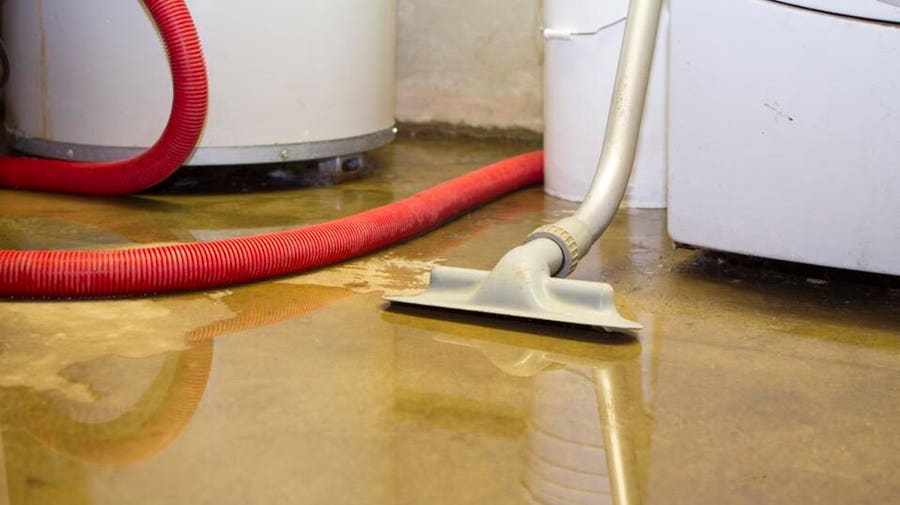

Understanding Insurance Coverage
Review your insurance policy
Understanding the extent of your insurance coverage is crucial when dealing with water damage caused by a plumbing mishap. Review your insurance policy to determine which perils are covered and the specific details related to water damage restoration. Pay close attention to any exclusions or limitations that may affect your coverage. If you have any questions or uncertainties, contact your insurance agent for clarification.
Understand covered perils and exclusions
Insurance coverage for water damage can vary depending on your policy and insurer. Thoroughly understand which perils are covered, such as burst pipes, appliance leaks, or overflowing plumbing fixtures. Additionally, be aware of any exclusions, such as flooding from natural disasters or negligence-related damage. Understanding these specific details will help you determine the extent of your coverage and how to proceed with your claims.
File a timely and accurate claim
When facing a plumbing mishap that leads to water damage, it is important to file a timely and accurate insurance claim. Contact your insurance company as soon as possible to initiate the claims process. Provide the necessary details documented during the initial stages, such as photos, videos, and receipts. Fill out the claim forms accurately and be transparent about the extent of the damage to ensure a smooth and efficient claims process.
Document all expenses related to the mishap
Throughout the restoration and remediation process, it is important to keep a record of all expenses related to the plumbing mishap and subsequent water damage. This includes invoices from plumbers, restoration professionals, and any additional costs incurred to restore your property to its pre-damage condition. Proper documentation will help support your insurance claims and ensure that you receive the appropriate compensation for the incurred expenses.
Follow any required procedures or guidelines
When dealing with insurance claims related to water damage, it is essential to follow any required procedures or guidelines set by your insurance company. Familiarize yourself with the specific steps, documentation requirements, and deadlines outlined by your insurer. Failure to follow these procedures may result in delayed or denied claims. If you have any questions or concerns, reach out to your insurance company for guidance and clarification.
Paying for Plumbing Repairs and Restoration
Consider insurance coverage
If you have insurance coverage for water damage, consider utilizing this coverage to help cover the costs of plumbing repairs and restoration. Review your policy to determine the extent of your coverage and any applicable deductibles. File a timely and accurate claim with your insurance company and provide all necessary documentation to maximize your reimbursement for the incurred expenses.
Explore financing options
Depending on the costs associated with plumbing repairs and restoration, you may need to explore financing options to cover the expenses. Speak with your plumber, restoration professionals, or financial institutions to discuss possible financing solutions, such as personal loans or home equity lines of credit. Carefully consider the terms, interest rates, and repayment options before making a decision.
Look for government assistance programs
In certain situations, there may be government assistance programs available to help homeowners with water damage restoration. Research local and federal programs that offer financial aid or grants for home repairs and restoration. Eligibility requirements and available funds may vary, so it is important to thoroughly investigate and understand the options that may be available to you.
Discuss payment plans with service providers
When working with plumbers or restoration professionals, it is worth discussing payment plans or flexible payment options. Some service providers may be willing to offer extended payment plans or negotiate the terms of payment based on your needs. Openly communicate your financial situation and explore potential arrangements that can help you cover the necessary expenses without causing additional financial strain.
Create a budget for repair and restoration costs
To manage the expenses associated with plumbing repairs and restoration, it is important to create a budget and stick to it. Assess the overall costs involved, including materials, labor, and any additional services required. Take into account your insurance coverage, financing options, and any available assistance programs. By creating a realistic budget and monitoring your expenses, you can ensure that you allocate your resources effectively and minimize any financial burden.
In conclusion, experiencing a plumbing mishap that results in flooding can be a stressful and overwhelming situation. However, by taking immediate steps to turn off the water supply, shut off the electricity, open windows and doors, move furniture and valuables, and protect electrical appliances, you can mitigate further damage. Contacting a professional plumber is essential for addressing the root cause of the problem, repairing or replacing damaged pipes, and ensuring the overall restoration of your plumbing system. Additionally, it is important to address water damage, mold, and mildew promptly to prevent future complications. By understanding insurance coverage, managing the financial aspects, and taking preventive measures, you can minimize the risk of plumbing mishaps and handle them effectively if they occur.



